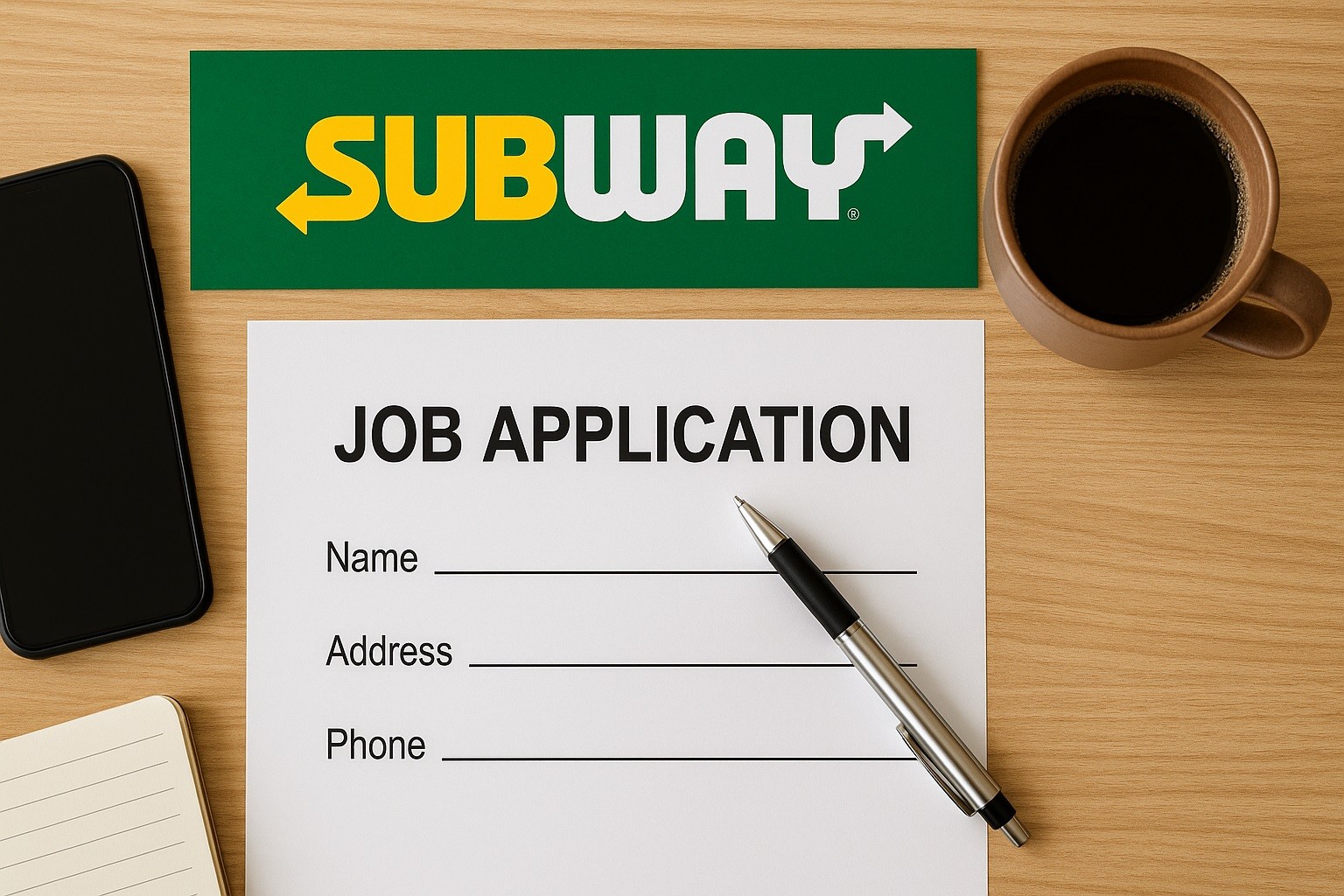Subway careers hires year-round for restaurant roles across the United States, with most locations run by independent franchise owners.
Applications are handled online through Subway’s official careers portal and its hiring partner.
Below you’ll find how the process works, what common roles involve, and typical U.S. pay ranges gathered from recent public salary snapshots.
Main Careers at Subway and Day-to-Day Expectations
On the site, you choose your country or region and browse roles (Sandwich Artist, Shift Manager, Assistant Manager, Manager, Multi-Unit Manager).
Benefit offerings can include training, brand discounts, and scholarship opportunities, but these vary by franchise.
Sandwich Artist / Team Member
Entry-level role focused on greeting guests, preparing orders to standard, maintaining a clean line and dining area, and following food-safety practices.
Training is provided; a high school diploma is often sufficient.
Common pay around $11–$13 per hour in many U.S. markets, with higher rates in some cities or states due to local wage laws and competition.
Shift Manager
Leads a shift, supervises staff, assigns tasks, controls inventory, and completes basic paperwork.
Typically requires prior restaurant experience and a high-school diploma or equivalent.
Pay is frequently around $13 per hour and up, with some stores listing day-rate equivalents depending on scheduling structure.
Assistant Manager
Supports staffing and scheduling, handles product ordering and receiving, and enforces safety and security procedures.
Prior supervisory experience is preferred.
Many reports place a Restaurant manager’s total pay in the mid-$50,000s on average.
Restaurant Manager
Oversees sales performance, recruiting and training, inventory and records, local marketing, and compliance with safety and food codes.
Two or more years of leadership experience is common; some postings prefer a college degree.
In some markets, medians can reach $90,000–$120,000 at larger franchise groups.

How to Apply for Subway Careers
The platform highlights that many stores are locally owned, so applications route to each franchise’s hiring workflow.
Entry-level postings emphasize guest service, food preparation, cleanliness, and food-safety standards.
Supervisory postings add scheduling, inventory, coaching, and shift leadership.
Store and multi-unit managers handle people leadership, compliance, local marketing, and financial targets.
- Go to the official portal. Open MySubwayCareer and select your region. Use the Careers section to view role paths and current openings, then click Apply to enter the application flow used by Subway franchisees.
- Search by location. Filter by city or ZIP code to find nearby franchise postings. Each listing reflects the local owner/manager and the store’s specific needs.
- Open a job description. Review responsibilities, required experience, shift times, physical expectations, and any certifications (e.g., a local food-handler card).
- Create a candidate profile. Provide contact details, availability, work history, and (optionally) a résumé. Some postings include short screening questions about schedule flexibility, customer service, or cash handling.
- Submit and monitor. After you apply, watch for messages from the store’s management about interview scheduling, next steps, and onboarding paperwork. Because hiring is local, timelines differ by market.
Hiring Timelines and What to Expect
Time-to-hire after Subway job applications varies because most restaurants are independently owned.
In many markets, entry-level candidates move from application to start within about a week, depending on interview availability, background checks, and paperwork.
Others may take longer if the store is hiring for future needs or multiple locations.
If you have not heard back after several days, a polite in-person check-in at the store can help.
Tips to Strengthen Your Application
Subway careers commonly hire for mixed day/evening/weekend shifts. If you can work opening, closing, or holidays, note it clearly.
A one-page résumé that highlights customer service experience, teamwork, and problem-solving is ideal for entry roles.
If you hold a food-handler card or similar certification, list it. If you don’t, indicate you’re willing to complete it immediately upon hire.
Because decisions are made in-store, a friendly check-in during off-peak hours (e.g., mid-afternoon) can keep your application top-of-mind.
What Happens After You’re Hired
New team members receive structured training on the menu build standards, line setup and prep, point-of-sale operation, guest engagement, and cleaning.
As you demonstrate consistency, you can gain shift responsibilities and later move into assistant management.
Store managers get hands-on experience with scheduling, ordering, local marketing, and coaching.
This can lead to multi-unit opportunities within larger franchise groups.

Competitors
Here’s a quick, U.S.-focused comparison of Subway careers versus major fast-food competitors.
| Brand | Typical entry role | Recent hourly pay snapshot (entry role) | Hiring model / notes |
|---|---|---|---|
| Subway | Sandwich Artist / Team Member | ≈ $11–$13/hr (Indeed shows Crew Member ≈ $11.77/hr; Sandwich Maker ≈ $12.45/hr; ZipRecruiter average ≈ $11.93–$12.43/hr). | Heavily franchised; pay/benefits set by local owners. |
| McDonald’s | Crew Team Member | ≈ $13.27/hr U.S. average (Indeed, updated Oct. 13, 2025). | Many restaurants are franchise-owned (job board shows “Franchise Owned”). |
| Taco Bell | Team Member | ≈ $14.65/hr U.S. average (Indeed, updated ~3 weeks ago). | Mix of company and franchise jobs; many apps flow via franchise systems. |
| Burger King | Crew / Team Member | ≈ $12.22/hr U.S. average (Indeed). | Most postings are franchise roles (separate apply site notes franchised locations). |
| Wendy’s | Crew Member | ≈ $13.69/hr U.S. average (Indeed, updated Oct. 13, 2025). | Site explains mix of company-owned and franchise restaurants. |
Choose Subway if you want a widely available, entry-friendly job with training, typically flexible scheduling, and a defined path into shift and store leadership.
With an added plus of a long-running scholarship program for eligible employees.
Pros and Cons of Subway Careers
Pros
- Entry-level friendly
- Flexible scheduling
- Predictable routines
- Advancement path
- Large footprint
- Transferable skills
- Scholarship/education programs (in some markets)
Cons
- Pay varies widely
- Benefits not uniform
- Inconsistent hours possible
- Fast-paced, standing work
- Limited cross-store mobility
- Compliance load
- Career growth depends on the owner
Bottom Line
To apply in the U.S., use the official Subway careers website, choose your region, and submit your application to the local franchise.
Subway’s role descriptions outline clear responsibilities and training paths for growth from entry-level to management.











